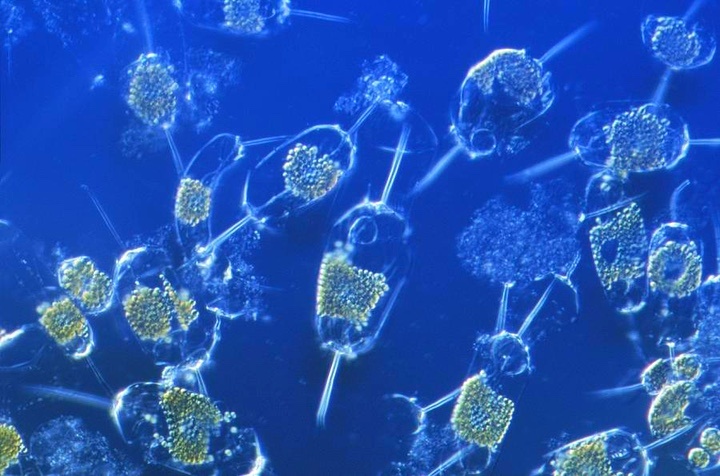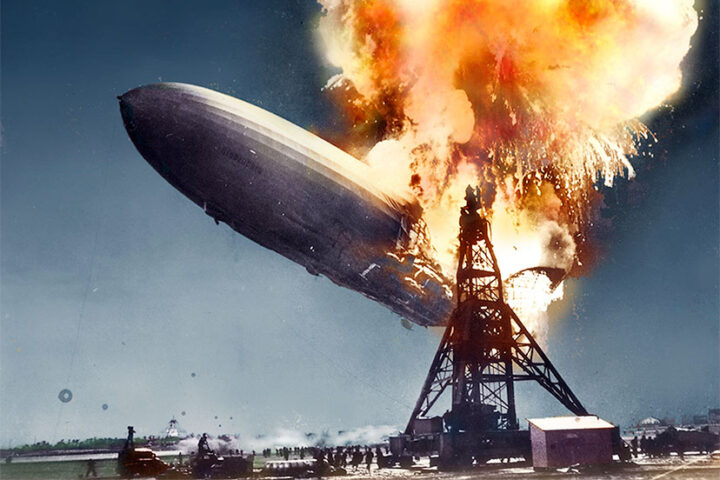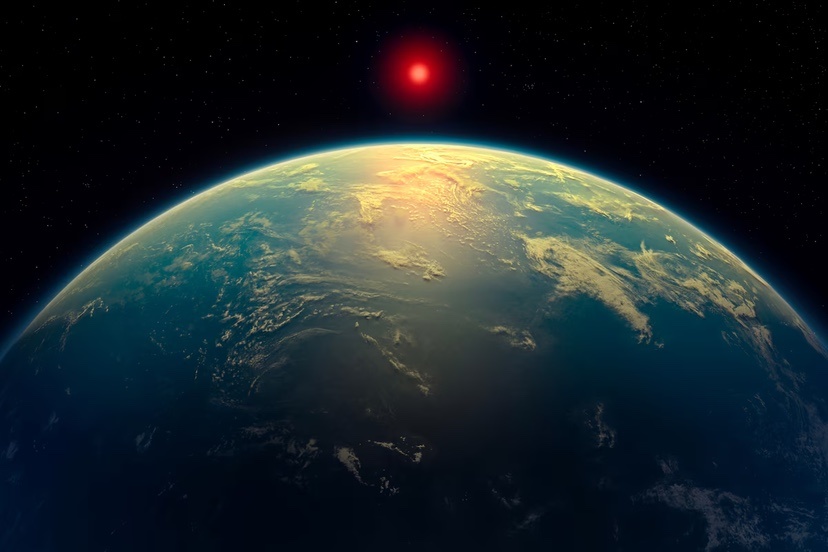Image: An artist’s conception of a hycean exoplanet orbiting a red dwarf star. (Credit, A. Smith, N. Madhusudhan/University of Cambridge)
The James Webb Space Telescope is clearly an amazing piece of modern technology, because nobody had previously been able to detect dimethyl sulfide on the distant planet known as K2-18b.
Apparently, K2-18b orbits a dwarf star about 124 light years away.
One light year is equal to about 5.9 trillion miles, so K2-18b is roughly 729 trillion miles from the Earth. Traveling in a used Subaru at 60 mph, it would take 506 billion years to make the drive to K2-18b. The universe is only about 13 billion years old, so obviously, no one has had enough time to make the journey in a used Subaru.
(I picked a used Subaru for my example, because that’s the kind of car I personally own.)
Earlier observations suggested that K2-18b’s atmosphere is consistent with the idea of a global ocean, and the presence of dimethyl sulfide further suggests the presence of marine phytoplankton, because here on Earth, the primary source of dimethyl sulfide, in nature, is the decay of marine phytoplankton, as well as other microbes. Microbes like, for example, the yeasts used in brewing beer.
Marine phytoplankton — also known as ‘microalgae’ — live in the ocean (as the label “marine” suggests) and they generally die there, if they don’t get eaten first. Shrimp, snails and jellyfish find them tasty… or at least, edible.

Phytoplankton are a lot like plants, in that they absorb CO2 from the atmosphere, work some kind of biological magic thanks to sunlight, and release O2 (oxygen). Until they die. Then, they release dimethyl sulfide.
As the result of billions of uneaten phytoplankton decaying in the ocean, dimethyl sulfide is the most common chemical form of sulfur in Earth’s atmosphere. The chemical is generally regarded as having an unpleasant odor. Various scientific sources describe the smell differently: as the odor of cooked cabbage, the smell of the ocean, or the odor of rotten meat. I don’t think I would ever confuse those particular smells, but science can be confusing.
After a group of scientists made repeated scans of K2-18b, they looked hard at the data — it was a lot of numbers, mostly — and theorized that the planet was probably a ‘hycean world.’ This is a relatively new (and unproven) type of planet theoretically covered by an ocean of water, and with a mainly hydrogen atmosphere. (Thus the name ‘hycean’?)
Our own atmosphere is mainly nitrogen gas. Hydrogen gas is a lot like nitrogen, except it’s highly flammable, thus suggesting that you would not want to light a cigarette on K2-18b.
The Hindenburg airship was filled with hydrogen, for example. They allowed smoking.

As noted, the Webb Space Telescope is an amazing apparatus, and the scientists want to keep using it to look at K2-18b for as long as possible, or until they get bored with whole thing. Interesting way to use a $10 billion telescope.
Of course, we will not see any great benefits, here on Earth, if scientists continue using the Webb Space Telescope to analyze foul-smelling chemicals on a planet 124 light years away.
So it enters my mind. Why are they doing this?
I mean, why would a group of intelligent British scientists spend their time measuring the amount of dimethyl sulfide on K2-18b, when no one will ever benefit from the knowledge?
When they could actually be doing useful work?
Even doing a single load of laundry is more beneficial, to humankind as a whole, than measuring dimethyl sulfide on K2-18b.
But I get it. These scientists are on a mission. They want, more than anything, to uncover evidence that there’s life on other planets. Scientists have searched in vain for proof of extraterrestrial life within our own solar system, and have consistently failed. So they have gone looking for other solar systems.
Surely, we are not unique, here on Earth? Surely, if life evolved on Earth, it has also evolved on other planets… somewhere…
Maybe we can’t find ‘intelligent life’ out there in outer space, but… can we at least find some phytoplankton? Is that too much to ask?
It also enters my mind that dimethyl sulfide can be produced by the decomposing yeast in a batch of beer that has gone bad. It’s completely possible that K2-18b — the entire planet — is carpeted with breweries operated by incompetent brewers.
That’s an unpleasant thought. But a true scientist needs to be open to unpleasant thoughts.
And unpleasant smells.
One thing we can be relatively sure of: there are no smokers on K2-18b.
Underrated writer Louis Cannon grew up in the vast American West, although his ex-wife, given the slightest opportunity, will deny that he ever grew up at all. You can read more stories on his Substack account.

